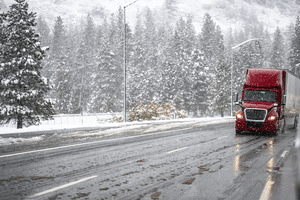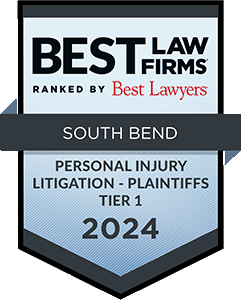
Data collected from the National Highway Traffic Safety Administration (NHTSA) shows that Indiana is among the 15 most dangerous states to drive in during the winter. The data also shows the fatality rate for winter driving in the state is about 25 percent.
Below, we discuss some of the most common winter driving hazards and what makes them so dangerous.
If you were injured in a crash due to winter weather conditions, you may be eligible for compensation depending on how the collision occurred. Call our South Bend-area car crash attorneys today to discuss your claim. The consultation is free and there are no upfront fees for our services.
Fog
A driver’s visibility is significantly reduced while driving in foggy conditions. Fog makes it difficult to spot potential obstructions on the road and judge distance. Fog may also create optical illusions for drivers by making it seem like they are moving slower than they really are. It is important for drivers to keep an eye on the speedometer to make sure they are not traveling at an unsafe speed.
Sometimes drivers mistakenly turn on their vehicle’s high beams to try and see through the fog, but this is dangerous, as the lights create a glare and make it more difficult to see. Instead, drivers should make sure to use their vehicle’s fog lights or stick to the low beams.
Snow
Heavy snowfall can not only make it more difficult to see other vehicles, but it can also make it hard to see lane markers. This could make it harder for drivers to stay within their lanes.
When the snow that has fallen finally melts, it creates slick roads, affecting tire traction. If a vehicle’s tires are underinflated, it could be more difficult to regain control of a vehicle if it starts to slide.
The salt used on roads to prevent ice build up can also cause the bottom of a vehicle to become rusted, as the chemicals in salt accelerate corrosion in metal. Rusty vehicle parts can create unnecessary hazards for others, as they can fall off a vehicle and cause an accident.
If enough snow accumulates on objects like tree branches or power lines, the weight of it could cause the object to fall. A tree branch falling onto the road may not only result in road closures, but it could also cause significant damage if it falls on a vehicle or pedestrian.
Snowplows
After fresh snow has fallen, drivers also need to look out for snowplows. When encountering a snowplow on the road, it is important to keep in mind that they:
- Travel slowly
- Make frequent stops
- Might overlap lanes
- Make wide turns
- Exit the road regularly
Drivers should leave enough room around a snowplow to avoid crashing into the vehicle and the snow it is removing. Remember that the snow these large vehicles push out of a lane tends to go off the sides of the blade.
Sleet and Freezing Rain
Sleet and freezing rain can cause ice buildup. If enough ice forms on a vehicle’s windshield, the driver’s visibility could be significantly reduced. If the falling sleet is thick enough, this could also cause an issue for drivers who may not be able to see their surroundings well enough.
The ice buildup on the road could also result in the formation of black ice, which is one of the most dangerous road conditions since it is mostly an invisible hazard. Drivers might not realize they are on black ice until their vehicle’s tires lock up and they have lost control of their car.
Unprepared Drivers
One hazard of driving in the winter many people may not account for is the preparedness of others. Getting winter-ready requires more than just dusting off your winter coat from your closet. It also means making sure your vehicle is prepared for snowy weather. This includes inspecting your vehicle’s:
- Antifreeze levels
- Battery
- Belts and hoses
- Brakes
- Defroster
- Heater
- Oil
- Tire tread
- Tire pressure
- Windshield wipers
- Headlights
- Taillights
- Caution lights
- Fog lights
Indiana drivers are accustomed to snowy conditions during the winter, but during those months when there is no snow, it is easy to forget to slow down or leave enough following distance between vehicles. That is why one additional hazard of winter driving is the first snow of the season. Some drivers may not check local weather frequently to know what the conditions on the road may be before they head out. If caught off guard, these drivers may be underprepared, which could result in negligent driving.
Call a Knowledgeable Attorney Today
If you were injured in an accident while driving in snow, sleet or foggy conditions due to another driver’s negligence, you may be able to recover compensation for your damages.
Our attorneys know how to negotiate with the insurance company for a fair settlement. If negotiations do not work, our attorneys are also prepared to file a lawsuit on your behalf to recover the compensation you need.
Call (844) 678-1800 for a free consultation.











